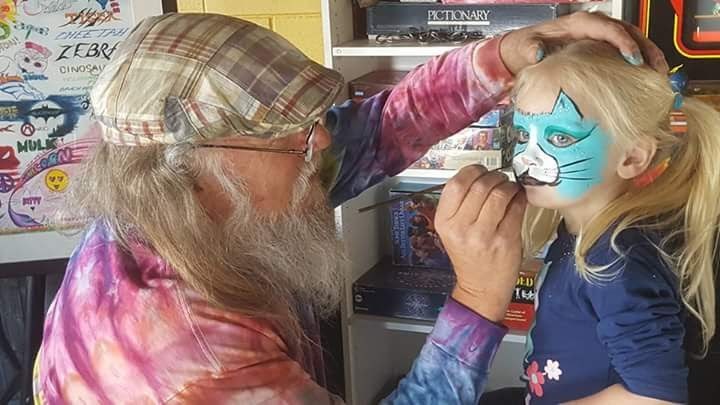David Hartman suffers from a great deal of physical pain. The pain was intense enough that he was once addicted to opioids. It was his passion for the arts that helped him kick the habit.
Hartman was born in Pennsylvania, then lived in Los Angeles until he was around 8-years-old, then his family moved to Frederick. He graduated from Longmont High school in 1976. Aside from a brief stint in Tennessee, he's stuck around.
Hartman suffers from debilitating pain due to osteoarthritis and degenerative disc disease. It sidelined him from a 30-year career as a machinist and tool and die maker and into a severe narcotics addiction.
"They got me down. I was really in bad shape. I spent eight years in isolation, and I decided I needed to quit the narcotics. I thought 'I can't do this, I'm a recovering alcoholic. I have no business doing this kind of drug,'" Hartman said.
His decision initially landed him in the hospital, but it also gave him an opportunity to find a drug-free way to control his pain. That's when he turned to art.
"I quit cold turkey, ended up in ICU for a week. The withdrawal almost killed me but I weaned off of it. I still had the pain, though, and I needed to look for a way to control pain and I found art," Hartman said.
He originally began drawing with colored pencils. He received a lot of encouragement from his family.
"I started drawing with colored pencils and my family was like ‘your stuff is really super good. You need to stop drawing pictures of Tinkerbell because that's copyrighted,’" Hartman said, "I responded with 'you're right.' So I started drawing pictures of other things."
Pre-pandemic Hartman also painted faces — something he's very passionate about, but is, unfortunately, not COVID-safe.
"I love being around kids. I always have my whole life and it's such an endearing thing. When I'm doing face painting, the pain just goes away because being involved with children, making them happy, is such a great payday for me," Hartman said.
Hartman is also a musician — lead guitarist, vocalist and Jerry Garcia impersonator in The Impersonators Band and plays in the band Random Neighbors.
In addition to being in a band, Hartman composes many of his own songs. One of which an old friend asked to use in a play, Hopscotch. Not only did the playwright want to use his songs, but she invited Hartman to be involved in the show. The experience connected him with other artists and with the Left Hand Artist Group. Though he's not very active at the moment, he's been a member for seven or eight years.
The play not only connected Hartman with other creatives but spurred him to become more involved in the community. Hopscotch director, Emily Andrews, introduced him to ArtWalk Longmont.
"Emily Andrews, who was directing, asked me if I wanted a position on the board of directors for Artwalk. I took that. I was just crawling out of the basement from eight years of isolation, and hardcore narcotics addiction. I was looking for a way to do something other than drugs and found this,” Hartman said.
He is now involved with other art entities like the Firehouse Art Center. He is the secretary on the organization's Board of Directors..
"I'm very active with that. Artwalk was my baby until this year. The executive director's doing it now, but I have been involved with that for years now. It's where my wife, Chrissy Driggs and I met. We met on the board of directors and served together for years. I continue to serve the community in that way," he said.
Hartman considers it his mission to give back. One way he does that is by sharing his story and spreading the message that there are ways besides narcotics to manage pain.
"Oxycodone is a big problem. I've discovered that art is a wonderful way to get around pain. We can only think of one thing at a time and that includes pain. You can walk your pain out with distraction and it is hard. My pain is real, it's really extreme. It's crippling, but I can find a way around it," he said.
Hartman doesn't want people to simply feel good when they see his work, he wants them to experience the therapeutics of art and enjoys helping guide people through it. He offers himself up as a collaborator.
"Let's sit down and play together, let's just do some fun music, and really reach into and kick that home with you. Or, let's do a collaborative art piece or, you know, here's, here's my color, here's how to draw an eye. Let's draw an eye together, and I've done this lots of times with people. That's where it works. That's where the love and compassion come in," Hartman said. "It's not when you just look at my picture, or you just hear my song. It's when you involve that connection."



